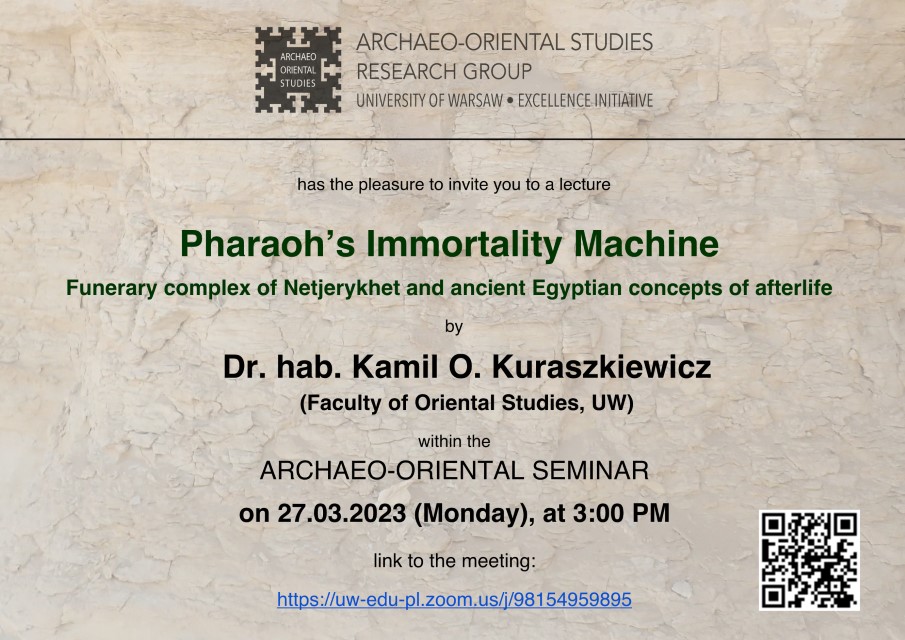Zespół Archeoorientalistyki zaprasza na kolejne seminarium. Wystąpi na nim dr hab. Kamil Kuraszkiewicz (Wydział Orientalistyczny Uniwersytetu Warszawskiego) z wykładem „Pharaoh’s Immortality Machine. Funerary complex of Netjerykhet and ancient Egyptian concepts of afterlife”
Abstrakt: The Step Pyramid Complex, built ca. 2650 BCE at Saqqara (Egypt) as a funerary monument for king Netjerykhet, who was remembered by later generations as Djoser, was a revolutionary structure in every respect, the first Egyptian monumental construction in stone and a ground-breaking achievement of ancient Egyptian construction and architecture.
The Step Pyramid complex, that – even severely damaged as a result of natural phenomena and human activity – still remains a dominant feature of the cemetery of ancient Egyptian capital, Memphis. As such, it strongly influenced builders of later tombs situated in its vicinity and was seen by subsequent generations as a monument of the glorious past. The owner of the tomb was remembered under the name of Djoser, which means ‘a Saint’, while its designer, Imhotep, was eventually deified.
Moreover, the complex contained not only the prototype of Egyptian pyramids, but also a mysterious, still under-researched feature called Dry Moat: a trench hewn in the bedrock that forms a 750 by 600m rectangle and encloses the royal tomb. The hitherto research conducted at Saqqara suggests that the Dry Moat was designed as a road into the afterlife, a three-dimensional, physical prototype of netherworld books being an element of later royal tombs. If so, the Dry Moat was the only object of this type in the history of Egyptian architecture.
Seminarium odbędzie się w poniedziałek, 27 marca o godzinie 15.00 na platformie Zoom: https://uw-edu-pl.zoom.us/j/98154959895

